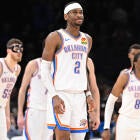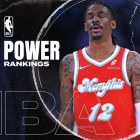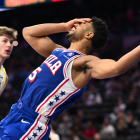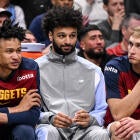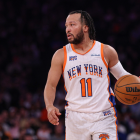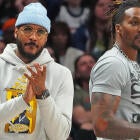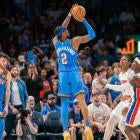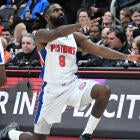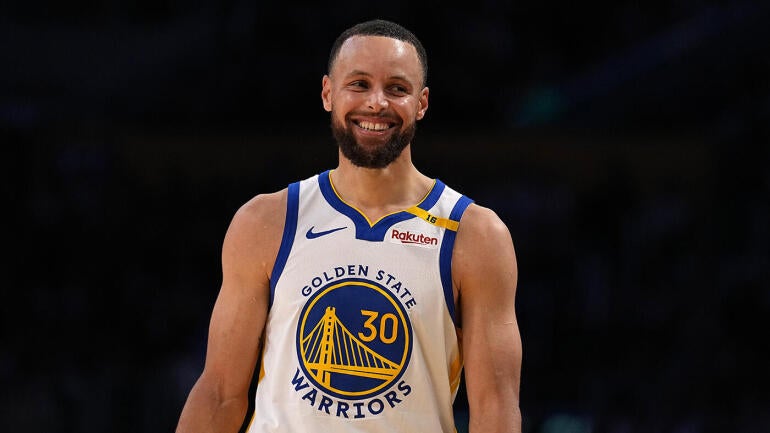
The Golden State Warriors didn't exactly abandon the two-timeline philosophy they adopted in the post-Kevin Durant era, but they took fairly clear steps away from it. They gave up on James Wiseman, their 2020 No. 2 overall pick, after just 60 games spread across three seasons. Jordan Poole, the young guard who helped them win the 2022 championship, was shipped off to Washington for the geriatric (by NBA standards) Chris Paul only a year later.
The young players that remained still had opportunities, but hardly appeared to be organizational priorities any longer. Brandin Podziemski was great as a rookie, but struggled to find a rhythm on a bloated, veteran roster in his second season. Jonathan Kuminga reportedly lost faith in Steve Kerr's coaching last season. Moses Moody could have been forgiven if he'd felt the same way given how frequently his own role was yanked around. The priority was to build one last winner around Stephen Curry, not one that would last after he was gone. The team never quite figured out where those few leftover youngsters fit into that mix, and it showed as their growth stagnated.
That's the great irony of the Jimmy Butler acquisition. It could not have more transparently been a move made for the present. He's 35 years old and isn't exactly known for long-term contentment with his employers. Getting Butler was about winning the 2025 championship. It has also, incidentally, offered quite a bit of clarity on Golden State's future. Kuminga, Podziemski and Moody are thriving in Butler's presence. It turns out, the key to maximizing Golden State's future was to make that future a bigger part of the present.
Butler is uniquely valuable to the Warriors in a number of ways. He addresses key weaknesses in foul-generation, rim-pressure and perimeter defense, but he is also the rare veteran superstar able to pick up Golden State's complex system relatively quickly. Miami runs a somewhat similar motion-based offense that echoes Kerr's egalitarian philosophy. Butler can take 25 shots in a game if he needs to. His ability to do so has fundamentally changed the way Golden State is defended. But he's a very inclusive star in that he doesn't need to take a bunch of shots to impact games. His mere presence gives the Warriors a clearer offensive hierarchy, but it does so without forcing everyone else into standard, role-player boxes.
That's how the Warriors wind up having games like they did on Thursday, a key 123-116 Western Conference win over the Los Angeles Lakers. Butler's own stat line was negligible. But Podziemski, Moody and Kuminga, the only three Warriors outside of the core star trio of Curry, Butler and Draymond Green to play more than 15 minutes, combined for 59 points. The Butler trade has simultaneously made their lives easier by taking defensive pressure off of them and empowered them to assume bigger workloads when the flow of a game allows it.
The numbers won't always show it for Moody as he is the least ball-dominant of the three, but his role change has been the most pronounced. Before Butler's acquisition he averaged fewer than 19 minutes per game. At times he nearly fell out of the rotation. But with all of the depth surrendered in Butler's acquisition, there was no more space to yank his minutes around. Kerr inserted him into the starting lineup for keeps on Feb. 13, giving him roughly 10 more minutes per night on average. Instead of being a rarely-used reserve, he's now the primary 3-and-D wing on a contender with two star creators. His shots are easier, yes, but that role stability has done wonders for his confidence as well. It's showing on the defensive end, where Moody is playing the best basketball of his career.
Podziemski is playing far more confidently as well. He entered this season with the expectation that he would be Golden State's secondary ball-handler and a key driver of their Curry-less bench lineups, but defenses adjusted to what worked last season and he struggled mightily. The Warriors acquired Dennis Schröder in response, which helped nobody. Not only did Podziemski have to contend with another ball-handler who occupied similar spaces as him, but he also knew that the trade itself was made in part because of his own stalled development.
The Butler deal offered needed balance. It brought back a star ball-handler, yes, but one that played a different position and worked from different places on the floor. He's not scoring in the paint quite as well as the Warriors would have hoped, but he's creating offense there for teammates and making his 3s again. For now, that's more than enough.
Kuminga was probably the iffiest fit with Butler. Hyper-athletic forwards like him traditionally work best when paired with as many shooters as possible. Butler and Green don't exactly fit the bill on paper, and reintegrating Kuminga after a lengthy injury absence has been a bit of a work in progress. Thursday was proof of concept, though, of how valuable a downhill driver can be within an offense that has an unlimited basketball IQ. Spacing can be manufactured in a variety of ways, and the ball-movement Green, Butler and Curry generate can work wonders. When they get it right and Kuminga is as involved and aggressive as he was on Thursday night, when he put up 18 points, nine rebounds and four assists against the Lakers, he "takes this team to another level" according to Green.
Moody, Kuminga and Podziemski are not the foundation of this Golden State renaissance. Obviously, Curry, Butler and Green are. But for perhaps the first time in their careers, all three are being treated as essential. Their roles are generally consistent on a game-to-game basis, and when they have it going, as they did on Thursday, the lineups and strategies Kerr deploys are capable of leaning into what they do well.
Does this mean the Warriors have truly set themselves up for a second timeline and built a contender that can outlast Curry? No, but in truth, that strategy was always unlikely to succeed. Accomplishing even one overall vision in the NBA is difficult. Servicing two competing ideas at the same time is nearly impossible.
Yet the Warriors are getting mileage out of that second timeline in a different, more practical sense. They're no longer looking at the young players as the leaders of tomorrow, but rather, as the role players of today. They've baked their future into their present in a way they never could quite balance before Butler's acquisition, and the result is one of the most terrifying teams in the Western Conference. They have three veteran stars, yes, but they also have an emerging group of young players that have finally found the stability they've needed to thrive.
![[object Object] Logo](https://sportshub.cbsistatic.com/i/2020/04/22/e9ceb731-8b3f-4c60-98fe-090ab66a2997/screen-shot-2020-04-22-at-11-04-56-am.png)










